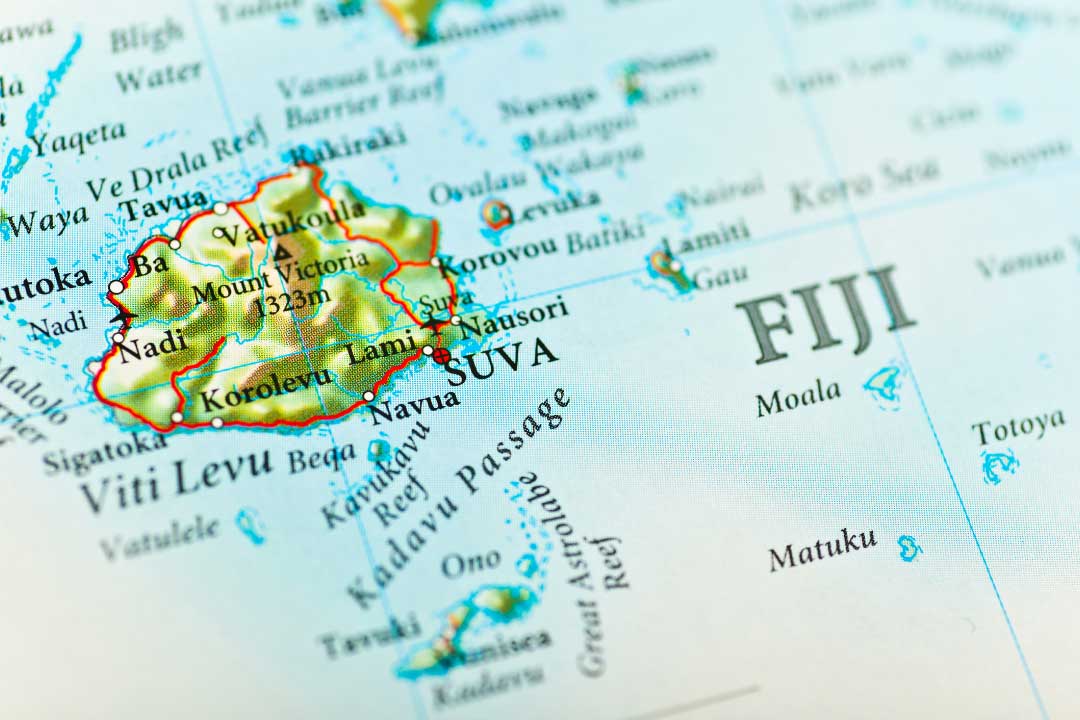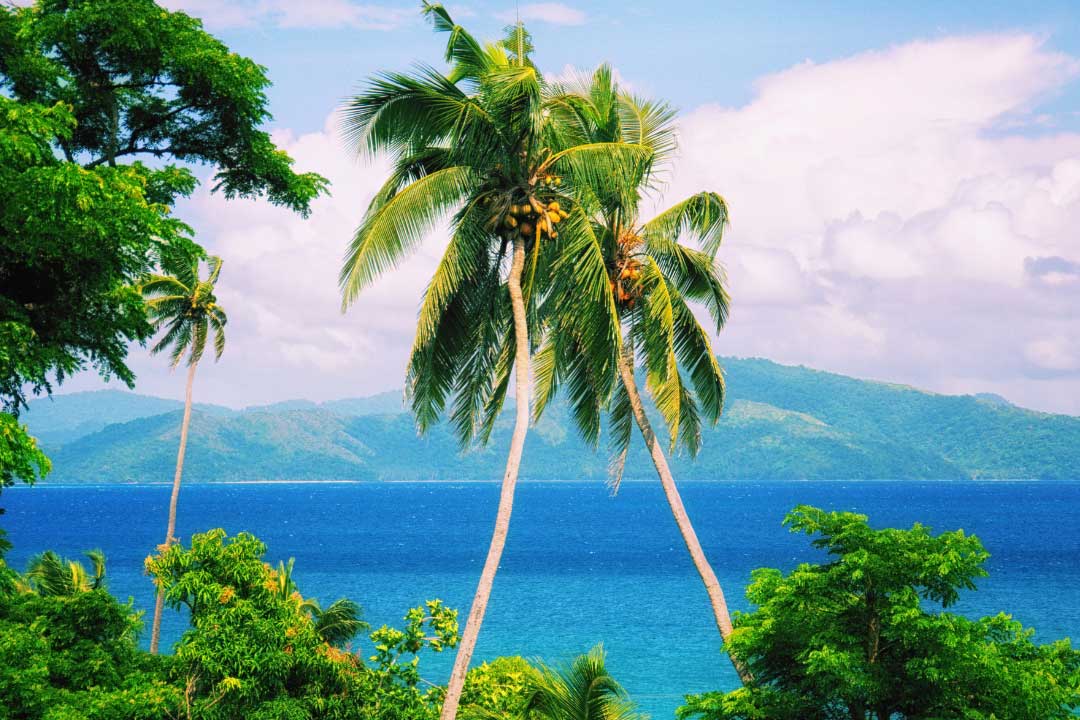


About Fiji (officially the Republic of Fiji)
Fiji is a group of over 330 islands in the South Pacific Ocean, part of the Melanesia region. This country is known for its breathtaking landscapes and rich cultural history that dates back to before 2000 BC. Viti Levu and Vanua Levu are its largest islands.
Fiji’s history is filled with interesting events, from the arrival of the first Austronesian and Melanesian people to the era of European exploration and later becoming a British colony. It finally gained independence in 1970.
By looking at Fiji, we learn about the strength and flexibility of its people and what island nations might do to thrive in today’s interconnected world.
Geography
In the Melanesia region, Fiji boasts a rich collection of more than 330 islands and over 500 smaller islets. This setup offers stunning natural landscapes, strategic importance, and a variety of cultures.
The country’s layout and many remote islands dramatically influence what makes Fiji unique. These islands, spread throughout the Pacific Ocean’s vast expanses, are not just areas of natural beauty but also places where communities have found innovative ways to live in harmony with their surroundings. People living in these far-flung areas, away from big cities, hold onto their traditions while tackling challenges like getting resources, growing their economies, and dealing with the effects of climate change.
Let’s break it down further: Fiji’s location is more than just a spot on a map; it’s a gateway connecting various cultures and ecosystems. The islands are known for their breathtaking environments, from lush forests to coral reefs, crucial for local wildlife and people. Despite being geographically isolated, the inhabitants of these remote islands have a strong cultural heritage. They’ve creatively adapted to their environments, showing resilience in the face of modern challenges.
For instance, in tackling economic development, some communities have turned to eco-tourism, offering visitors a chance to experience their unique way of life and pristine natural settings. This brings in income and raises awareness about the importance of preserving these environments.
In essence, Fiji’s geographic characteristics shape a diverse nation rich in culture and actively preserve its beauty and heritage against modern challenges.

History
Exploring Fiji’s history shows us how people, cultures, and foreign influences have come together to shape this nation. Let’s break it down into more manageable bits:
1. Before Europeans Came: The first people of Fiji created rich cultures and traditions. They were skilled in living off the land and sea in Fiji’s varied environments. Here, we see a blend of Melanesian and Polynesian influences forming a unique society.
2. When Europeans Arrived: In the 1600s, Europeans landed in Fiji, bringing trade opportunities and Christianity. This was a turning point as these new elements blended with the local customs.
3. Under British Rule: 1874 Britain took control of Fiji, marking a significant change. They brought people from India to work, significantly changing Fiji’s population and cultural makeup. During this period, they introduced new crops and farming methods, reshaping the economy and society.
4. After Gaining Independence: Fiji became independent in 1970. Since then, it’s been working to find the right balance between keeping traditional values and embracing modern ways. This includes facing challenges and progressing in education, healthcare, and governance.
In discussing Fiji’s history, it’s essential to understand why these events are crucial. They help us see how Fiji has evolved into the diverse and vibrant country it is today. For example, introducing Indian labourers under British rule has led to a multicultural society, enriching Fiji’s cultural tapestry. Today, Fiji is known for its beautiful landscapes, rich culture, and warm, welcoming people, attracting visitors worldwide.

Economy
Despite being far from other countries, Fiji has a strong economy with different industries that help it grow and stay stable. Here’s a closer look at what’s driving Fiji’s economy:
1. Tourism: Fiji is a top vacation spot because of its stunning beaches, rich culture, and fantastic sea life. This sector is critical because it attracts many visitors who spend money and support local businesses like Mai Island Rids 3 Day Motorcycle Tour of Fiji
2. Agriculture: Besides sugar cane, which Fiji has been known for, there’s a growing trend in farming organic food. This is important because it meets local needs and opens up new markets for Fiji’s products.
3. Fisheries and Aquaculture: Fiji makes good use of its abundant sea life by fishing and farming marine species in ways that don’t harm the environment. This is crucial for feeding people in Fiji and selling to other countries.
4. Manufacturing and Services: Fiji is expanding beyond traditional industries with clothesmaking and banking. This diversification means Fiji isn’t just relying on one or two things for its income, strengthening its economy.
These areas show that Fiji is smartly using its resources to grow economically while caring for its natural and cultural heritage.

Population
Fiji’s population mixes Austronesian, Melanesian, Indian, and European backgrounds, making it a vibrant and diverse country. This mix of cultures makes Fiji’s culture rich and shapes its society, economy, and politics.
Studying how Fiji’s population grows is crucial because it shows how the country is doing regarding its development goals and challenges. Fiji needs to increase its population sustainably, meaning that everyone has enough resources. The combination of different ethnic groups and population growth offers Fiji a chance to build a community that welcomes everyone and can adapt to changes around the world.
To ensure the text is simple, let’s avoid complex phrases and explain the importance of each point. For example, understanding why sustainable growth is essential helps emphasize that resources could become strained without it, affecting everyone’s quality of life.
By using transitions, we can smoothly move from discussing Fiji’s diverse population to the significance of sustainable growth, connecting the two topics naturally. Choosing an active voice, such as saying, ‘Fiji’s population mix makes its culture rich’ instead of ‘The richness of Fiji’s culture is made by its population mix,’ makes our points more transparent and more direct.
While specific examples and product recommendations might not be directly relevant to this topic, focusing on providing rich details and comprehensive paragraphs will help us cover the subject thoroughly. Finally, writing in a conversational style will make the text more relatable and easier to understand, as if having a friendly chat about Fiji’s population dynamics.

Culture
Fiji’s diverse population is crucial in creating its unique cultural landscape. The country’s culture blends Austronesian, Melanesian, Indian, and European influences, making it an exciting place to study how different cultures can live together and influence each other. Here’s how Fiji showcases its cultural richness:
1. In Fiji, traditional customs mix with modern ways of life, creating exciting and evolving cultural practices. For example, conventional Fijian ceremonies often incorporate contemporary music or attire, showcasing a blend of the old and new.
2. Fijians love to celebrate their cultural diversity. Festivals, music, and dance are big here, each telling a story of Fiji’s heritage. The Diwali festival, marked by the Indian community, and the indigenous Fijian Meke dances are just two examples of how culture is celebrated.
3. The interaction between Fiji’s ethnic groups has led to a strong sense of unity despite their diversity. This means that while Fijians are proud of their cultural heritage, they also respect and celebrate the traditions of others.
4. Fiji is committed to preserving its cultural heritage. This is evident in how indigenous Fijian culture is maintained and the influence of Indian culture. Both are celebrated and respected, showing the country’s dedication to its diverse cultural roots.
Fiji’s combination of cultures shapes its social environment and makes it a fascinating destination for those interested in multiculturalism. This rich cultural scene offers visitors a chance to experience a wide range of traditions and customs, all in one place.
Adventure Awaits in Every Ride
Immerse yourself in Fiji’s breathtaking landscapes, from untamed mountains to historic coastal trails, all on world-class Gas Gas motorbikes. Your unforgettable journey starts here!
